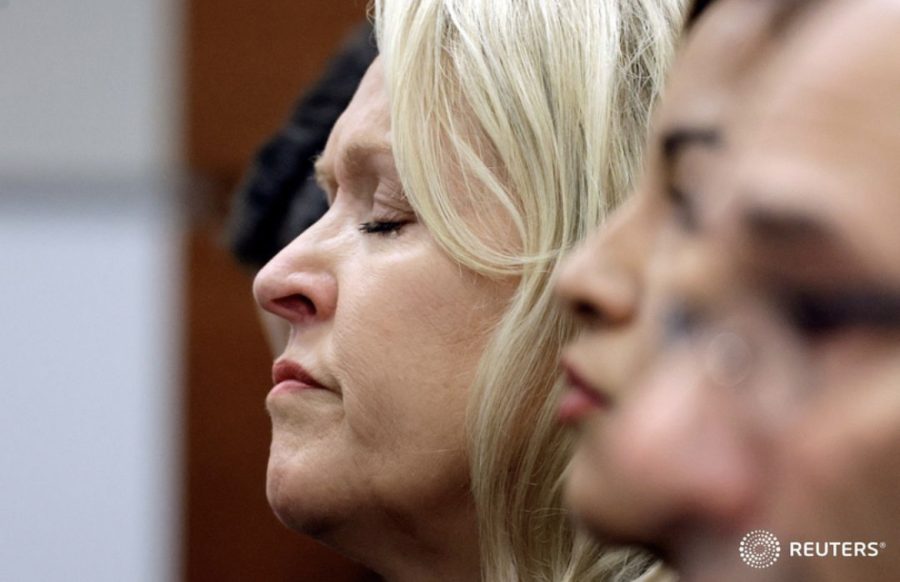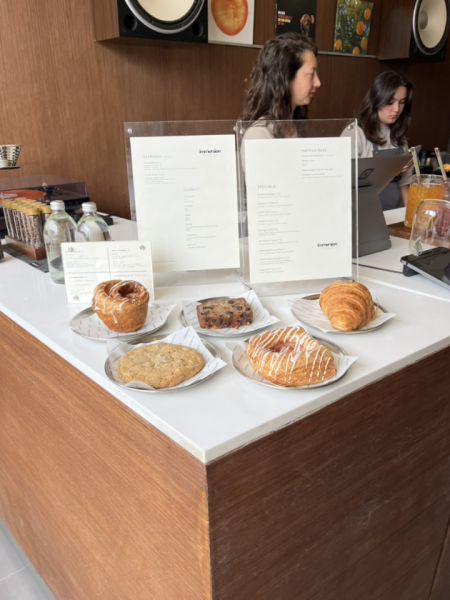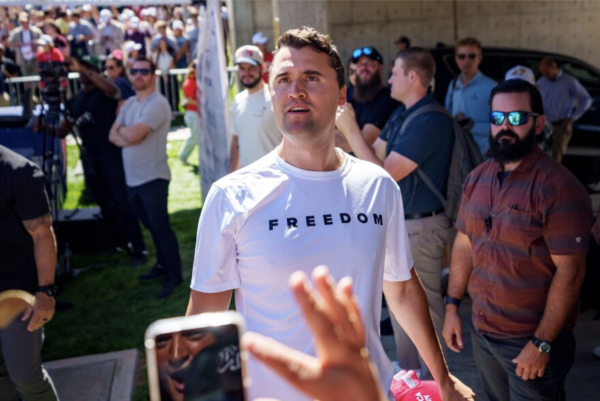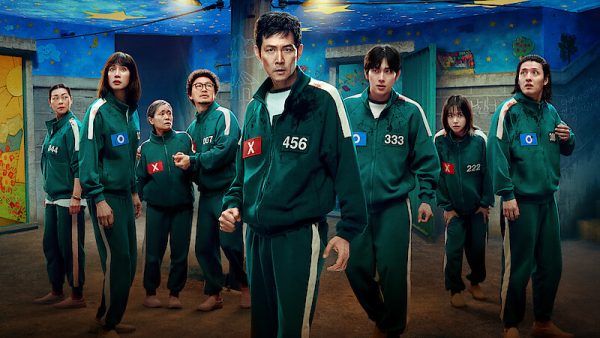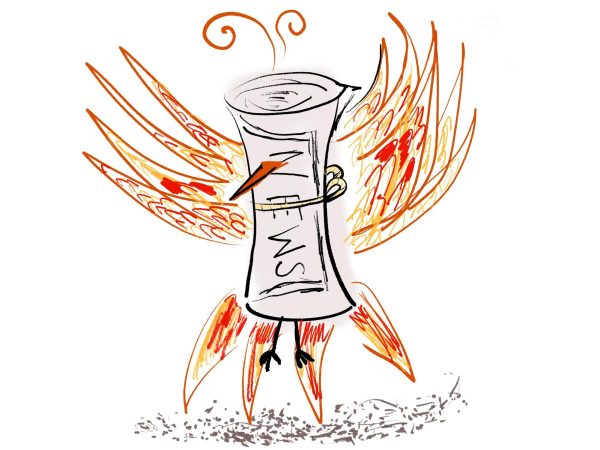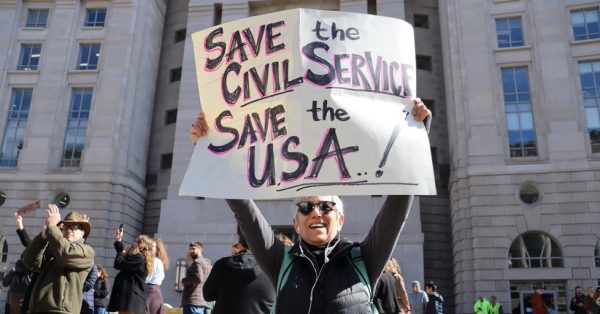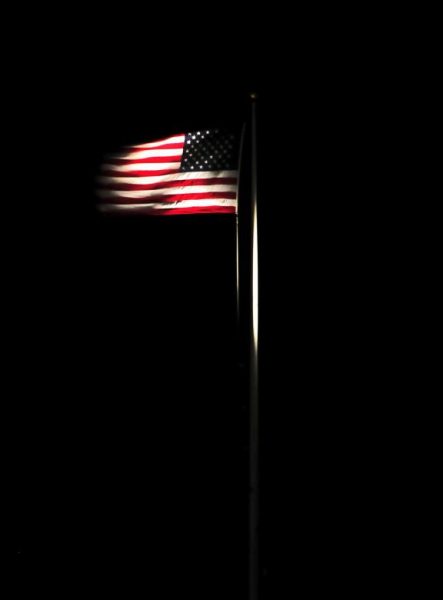An Injustice for Parkland Victims
Parkland school shooter, Nikolas Cruz, spared the death penalty
Families felt that justice was not served with the decision to sentence Cruz to life without parole instead of capital punishment. Pictured is Gena Hoyer, mother of Luke Hoyer a victim of the shooting, awaiting the sentencing.
Note: There are mentions of sensitive topics like gun violence, mass shootings, and school shootings in the following article. Please consider reading this with a trusted adult.
On February 14, 2018, Nikolas Cruz, 19, entered Marjory Stoneman Douglas High School in Parkland, Florida, and murdered 17 people, and injured 17 others, in one of the most deadly school shootings in this century. In October 2021, Cruz, 23, pleaded guilty to 17 counts of premeditated first-degree murders, and 17 counts of attempted murder. This year he was brought to a sentencing trial for the death penalty. After a three-month-long, heartbreaking penalty trial, he walked away with only life without parole.
Those murdered in the shooting, Alyssa Alhadeff, 14; Scott Beigel, 35; Martin Duque, 14; Nicholas Dworet, 17; Aaron Feis, 37; Jaime Guttenberg, 14; Luke Hoyer, 15; Cara Loughran, 14; Gina Montalto, 14; Joaquin Oliver, 17; Alaina Petty, 14; Meadow Pollack, 18; Helena Ramsay, 17; Alex Schachter, 14; Carmen Schentrup, 16; Peter Wang, 15, and Mr. Hixon, did not get to walk away like Cruz. Many victims’ families walked away from the sentencing trial horrified and upset, agreeing that justice had not been served. How did his life matter more than the 17 people he intentionally murdered? Cruz deserved capital punishment.`
Capital punishment, or the death penalty, has a rocky history, yet it still remains in 29 states. The punishment faced a momentary ban, as a result of the 1972 Supreme Court case, Furman v. Georgia, when the Court declared the death penalty as “cruel and unusual punishment in violation of the Eighth and Fourteenth Amendments.” Only four years later, in Gregg v. Georgia, the Supreme Court reinstated the punishment. Since 1976 there have been 1,512 executions. The death penalty is utilized, many times unfairly, and sentencing the shooter to capital punishment could have been a step forward in proper coviction.
The majority of the United States still maintain the death penalty, however, it has lost support progressively since the 1990s. The country’s thoughts surrounding the death penalty are always shifting, and often As of April 1, 2022, there are 2,414 people sitting on death row. According to Death Penalty Information Center (DPIC), California has the highest number of inmates facing capital punishment with 690, and Florida has 323 inmates on death row, the second highest in the country. Florida clearly does not stray away from using the penalty, so why not apply it, correctly, to this case?
The United States requires that first the defendant must be convicted of a capital offense, which includes first-degree murder, or murder with special circumstances, then they can be tried for capital punishment. A 12-member jury must unanimously agree that the aggravating factors, factors that increase a sentence, presented by the prosecution, outweigh any mitigating circumstance, factors that can decrease a sentence.
In the case of the Parkland shooter’s sentence, after deliberating for seven hours, three jurors determined that the shooter did not deserve the death penalty. The Washington Post reported that the jury foreman Benjamin Thomas said the verdict ‘“really came down to one specific” juror who believed Cruz “was mentally ill.”’
The jurors were to consider 41 mitigating factors. The shooter’s defense emphasized that he had suffered from fetal alcohol syndrome, as his mother Brenda Woodard was confirmed to have abused alcohol and drugs such as crack cocaine while pregnant, which eventually translated into the shooting. The Center for Disease Control and Prevention (CDC), affirmed that fetal alcohol syndrome can lead to attention problems, including attention-deficit/hyperactivity disorder (ADHD), conduct disorder (aggression toward others and serious violations of rules, laws, and social norms), alcohol or drug dependence, depression, and anxiety. But even with the circumstances of the shooter’s childhood and upbringing, it was still a premeditated massacre.
The shooter was given up for adoption after his birth. He witnessed his adoptive father’s death, due to heart disease, in 2004. He then went on to exhibit aggression in middle school and was diagnosed with ADHD, autism, and obsessive-compulsive disorder (OCD). In 2016, he told another kid he had a gun and wanted to use it. Authorities were contacted and he was supposed to have a psychiatric evaluation but never did. However, he attended a school for kids with emotional problems but wanted to return to Stoneman Douglas High School. Upon returning, he was receiving failing grades and was forced to drop out. He bought the AR-15 rifle, three days later, the same gun he would use just a year later.
The year before the shooting he was planning, according to the prosecution, he researched the Columbine School Shooting, in 1999, as well as the 2007 school shooting in Finland. He also spent that year collecting ammunition and shortly before the attack created a series of video manifestos, where he said things like, “I’m going to be the next school shooter of 2018,” and “When you see me on the news you’ll know who I am,” with a smile on his face.
Indeed, the shooter had a rough upbringing and had many mental disorders, but as Michael Satz, the prosecutor on the case said, “It was calculated. It was purposeful. And it was a systematic massacre,” he “had a plan, he discussed it, and he carried it out.” The mitigating circumstances simply does not outweigh the attack. The shooter fired at point-blank range, only stopping when he could not find any more people to shoot and killed 17 people in only six minutes and 22 seconds. He needed to be held accountable for his actions, and life without parole simply does not achieve that.
There are many arguments against the death penalty, ones tied to religious, or moral beliefs, but it was determined to be constitutional for a reason. Unfortunately, the death penalty has a long history of racial disparity. According to the National Association of Criminal Defense Lawyers (NACDL), while African Americans make up only 13% of the U.S. population they make up 41% of the death row population.
However, when it is exercised correctly, without being used with regards racism, it can exact “society’s right to make a moral judgment by imposing a punishment on a wrongdoer befitting the crime he has committed,” according to the Heritage Foundation, a nonprofit orginization that prioritizes advancing public policies. The victims’ families have a right to justice. The victims themselves have a right to justice. Parkland has a right to justice. As Florida Governor Ron DeSantis put it, the shooter was “‘massacring those students with premeditation in utter disregard for basic humanity.”’ Does his life matter more than those who were murdered?
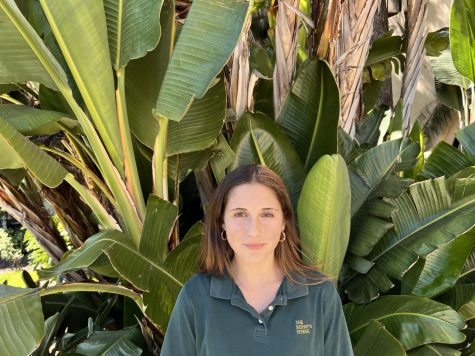
Bella Gallus is a senior and the Managing Editor for The Tower. Bella relies on her Spotify playlists, carefully curated for each of her moods, and her...


